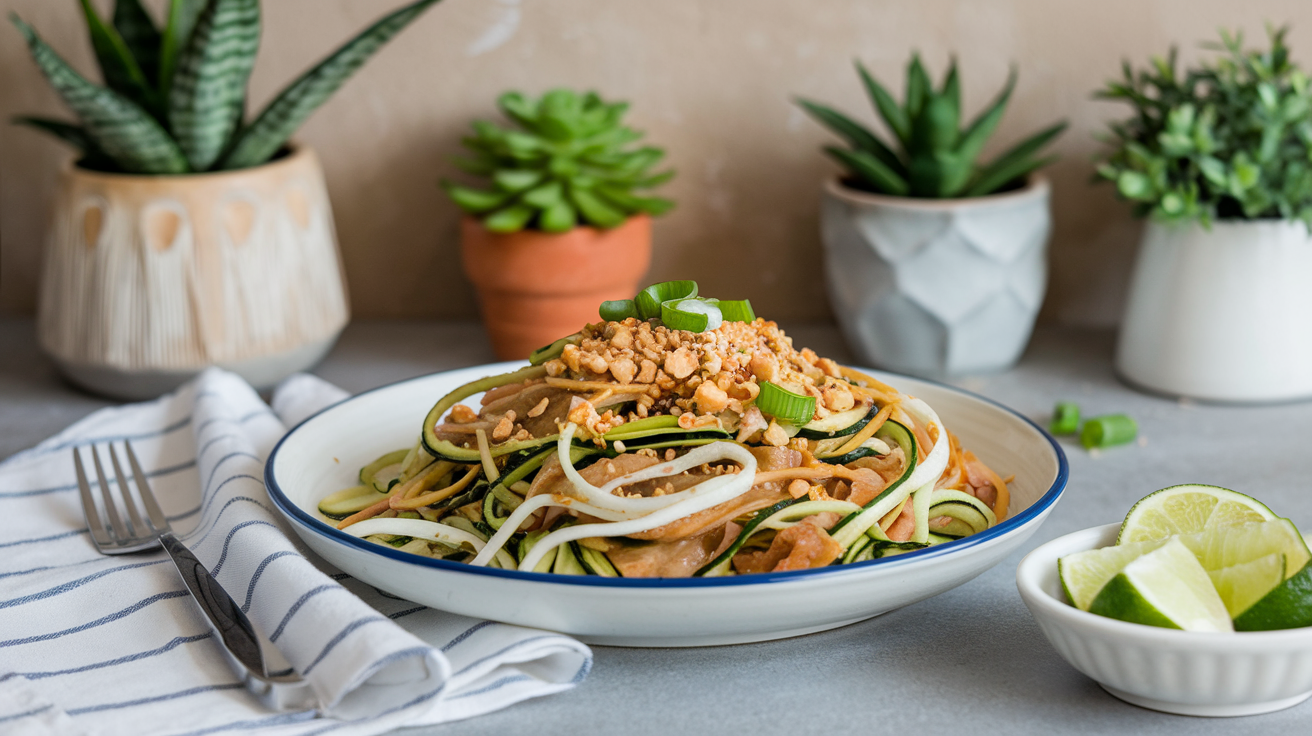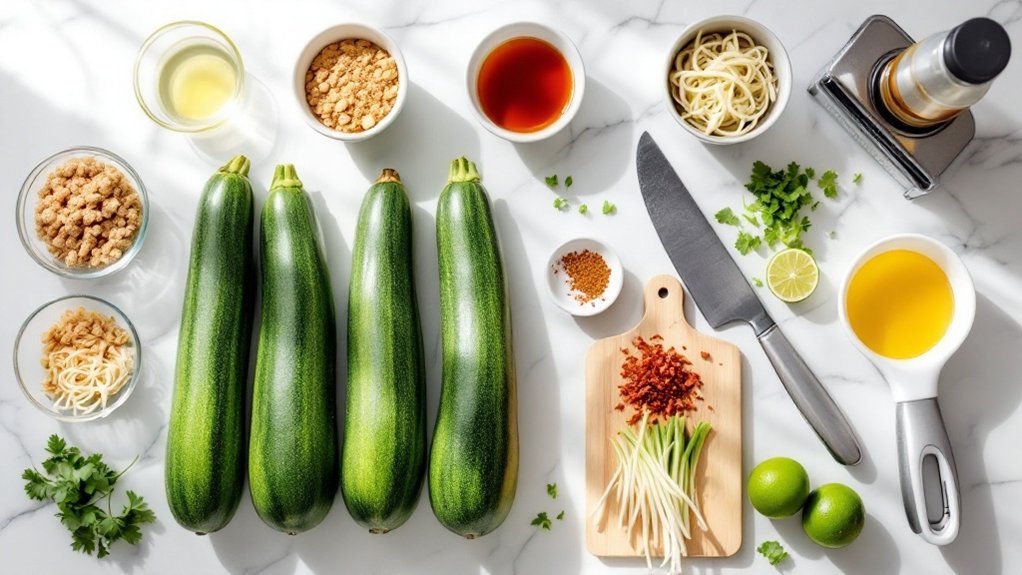
Studies show that over 60% of Americans actively seek low-carb alternatives to their favorite dishes. You’ll find Zucchini Noodle Pad Thai at the forefront of this culinary revolution, offering a creative spin on Thailand’s beloved street food. While purists might raise an eyebrow at swapping traditional rice noodles for spiralized zucchini, this modern interpretation doesn’t just cut carbs—it transforms a comfort food classic into a nutrient-rich meal worth exploring.
History
While traditional Pad Thai features rice noodles as its base, the zucchini noodle variation emerged during the low-carb and gluten-free movement of the early 2010s.
As you’ve likely noticed, this modern interpretation reflects society’s shifting dietary preferences and growing interest in vegetable-based alternatives. You’ll find that the spiralizer tool, which gained popularity around 2014, made it easier to create these veggie noodles at home.
The dish combines the authentic flavors of Pad Thai – tamarind, fish sauce, and palm sugar – with spiralized zucchini instead of rice noodles.
You might be interested to know that this adaptation has become a staple in health-focused restaurants and food blogs, offering a lighter version of the beloved Thai street food classic.
Recipe

Zucchini noodles, also known as “zoodles,” have become a popular low-carb alternative to traditional rice noodles in many Asian-inspired dishes. This healthier version of Pad Thai maintains the authentic flavors of the classic Thai street food while incorporating fresh vegetables and reducing the overall carbohydrate content.
This recipe combines spiralized zucchini with a savory-sweet sauce made from tamarind paste, fish sauce, and palm sugar. The dish comes together quickly and can be customized with your choice of protein, making it suitable for both vegetarian and non-vegetarian diets.
- 4 medium zucchini, spiralized
- 2 eggs, beaten
- 8 oz protein of choice (tofu, chicken, or shrimp)
- 2 tablespoons fish sauce
- 2 tablespoons tamarind paste
- 2 tablespoons palm sugar
- 1/4 cup crushed peanuts
- 2 cups bean sprouts
- 2 green onions, chopped
- 2 cloves garlic, minced
- 1 lime, cut into wedges
- 2 tablespoons vegetable oil
- 1/4 cup dried shrimp (optional)
- Red pepper flakes to taste
Heat oil in a large wok over medium-high heat. Cook the protein first until done, then set aside. Add garlic and stir-fry until fragrant. Push ingredients to one side and scramble eggs in the empty space.
Add zucchini noodles and cook for 2-3 minutes until slightly softened. Mix the sauce ingredients (fish sauce, tamarind paste, palm sugar) in a small bowl and add to the wok. Return protein to the pan, then add bean sprouts, crushed peanuts, and green onions. Toss everything together and serve immediately with lime wedges.
To prevent watery zoodles, salt them and let them sit for 10 minutes before cooking, then pat dry with paper towels. For a vegetarian version, replace fish sauce with soy sauce and omit dried shrimp.
The dish can be made keto-friendly by substituting palm sugar with monk fruit sweetener or erythritol. For additional vegetables, consider adding julienned carrots or bell peppers.
Final Thoughts
This fresh take on Pad Thai offers more than just a low-carb alternative to the classic dish – it’s a testament to culinary innovation and adaptability.
By swapping traditional rice noodles for spiralized zucchini, you’ll create a lighter meal that still captures the authentic flavors of Thailand.
You’ll find this version particularly appealing if you’re watching your carbohydrate intake or simply want to incorporate more vegetables into your diet.
The dish comes together quickly, making it perfect for busy weeknights, and you can easily customize it with your preferred protein choices.
While purists might stick to the traditional recipe, this modern interpretation proves that healthy substitutions don’t have to compromise taste.
Give it a try – you might discover your new favorite way to enjoy this beloved Thai dish.


